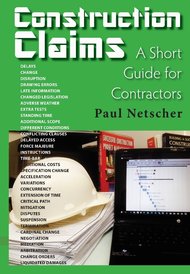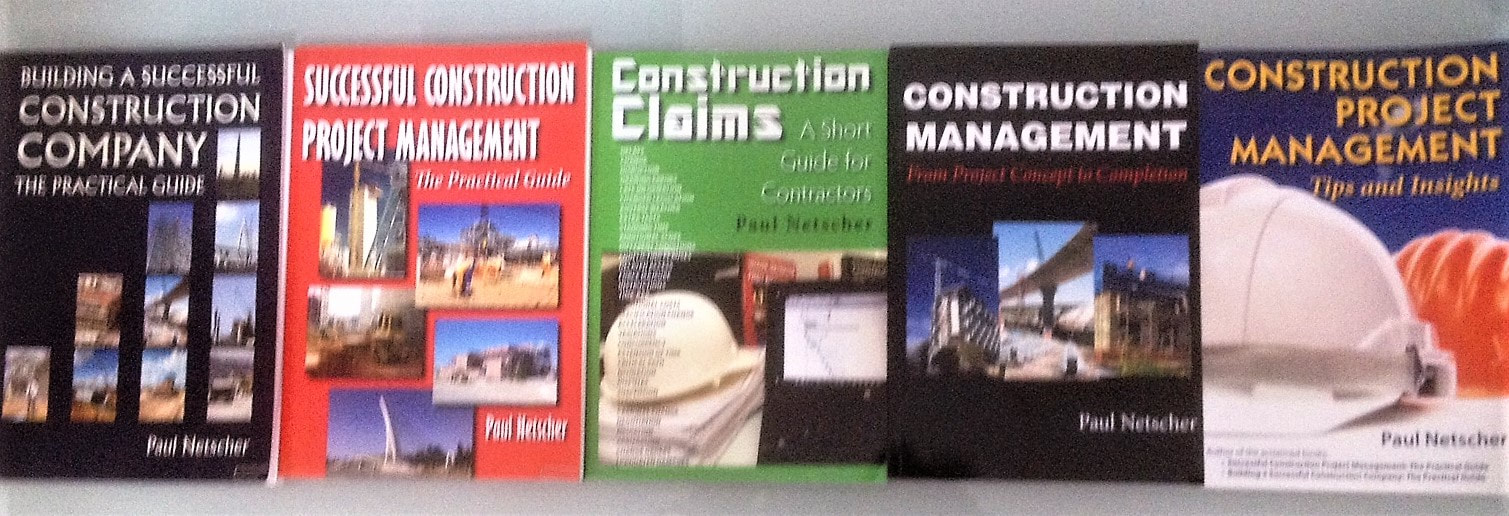 Image courtesy of Sira Anamwong at FreeDigitalPhotos.net Image courtesy of Sira Anamwong at FreeDigitalPhotos.net I’m sure at some stage we’ve all had a construction project that no matter what we did, or how hard we worked, the project was doomed to lose money. Month end cost reports just brought more bad news. Our bosses were grumpy and usually blamed us for the losses. We were told to cut costs, cut people and get the project back on track. Most construction companies go through periods of good times, which are inevitably followed by a cycle when work is scarce, when profits turn to losses. In an attempt to remain profitable, construction companies and projects resort to cost saving measures. Many of these cost saving measures are necessary and yield the desired results. Unfortunately, some measures are handled badly, go to extremes, or are counterproductive and eventually exacerbate the losses. Cost saving measures that can cost money
Conclusion If your construction project or company is losing money it's important to understand why, and then get to the underlying cause. Maybe you are losing money on wages and salary, but what is the real cause? It’s often not simply because there are too many people, and cutting staff may in fact exacerbate the problem. Sometimes there are even a number of reasons contributing to the problem so it’s important to uncover them all. Knowing the real reason the project or company is losing money enables you to rectify the problems. Frequently it only takes small adjustments, or changing a few key people and the project can turn around. Unfortunately, some projects are doomed to make a loss – maybe they were priced badly, things didn’t go according to plan, or mistakes were made at the beginning. In these instances it's important to get the project finished as soon as possible while maintaining good quality and safety standards. It’s easy to be depressed sometimes, but depression can be like a viral infection quickly spreading through the rest of the team, impacting morale and productivity. It’s important to keep the team’s morale up, to maintain good productivity. People don’t want to feel like they’re working for a losing team. Construction companies will go through cycles of little work and scarce profits, but in these times good people, the right technology, good equipment and a good reputation are even more vital to the company’s survival. It’s always vital to take a critical look at costs to see how we can reduce them, but we must do things for the right reason and not just for the sake of cutting costs. Don’t let your cost cutting measures cost you more than they are worth. What cost cutting measures has your company taken that have backfired? Have you taken a critical look at your costs recently to see how they could be reduced? This article is adapted from information in the author’s popular books: 'Successful Construction Project Management: The Practical Guide' and 'Building a Successful Construction Company: The Practical Guide' and 'Construction Project Management: Tips and Insights'
'Construction Claims: A Short Guide for Contractors' is another of Paul's useful books. Paul has recently published 'Construction Management: From Project Concept to completion'. These books are available on Amazon and other online book stores. Paul publishes articles regularly on LinkedIn and his website. Paul writes regular articles for other websites, gives lectures, mentors, and is available for podcasts and interviews. © 2018 This article is not to be reproduced for commercial purposes without written permission from the author. Most of us have at some time submitted variation claims to our customers for changes encountered during the course of the project. Some are for extra costs only, while others are the extension of time claims which usually also result in additional costs. On some projects, these claims are worth millions of dollars. It’s essential that you submit a well thought through and substantiated variation claim. However, even if your claim is well presented and includes all the facts, clients usually require a meeting to discuss your claim. They often have questions, dispute your facts and calculations, or just believe that contractors automatically inflate their claims and it’s, therefore, their right to negotiate the claim down to a smaller value. Sometimes they don’t understand the claim. In fact meeting with the client soon after the claim is submitted enables you to answer questions and explain the basis of the claim before the client’s team has made a firm decision regarding your variation claim. Once a claim is formally rejected it can be difficult to reverse the decision. Often egos come into play and people don’t want to be seen to lose face by backing down. These claim meetings are important because they can secure extension of time and variation claims which can be worth millions of dollars. Failure to resolve these claims can see them drag out for months and even years – often costing huge amounts of time and money. They can become bitter disputes, souring the relationship with your client and even damaging the project. As long as these variations aren’t settled your company is probably not being paid the claim, which can be detrimental to your company’s cash flow and possibly put your company’s future in jeopardy. You need to settle variation claims as amicably and as quickly as possible, ensuring you win what’s due to your company. Face to face meetings with your client and their team is often useful to shortcut the claims process, giving you an opportunity to answer their questions and understand their concerns. Unfortunately, many contractors go into these meetings ill-prepared, or with an attitude spoiling for a fight. Here are a few tips to help you win your variation claims. Before the meeting:
This article was first published on the ClockShark website. To visit this website and continue reading the article click on the link above.
Please share this post To read more about the author’s books and find out where you can purchase them visit the pages on this website by clicking the links below: 'Successful Construction Project Management: The Practical Guide' 'Building a Successful Construction Company: The Practical Guide' 'Construction Claims: A Short Guide for Contractors' 'Construction Project Management: Tips and Insights' 'Construction Management: From Project Concept to Completion' 'Construction Book reviews' To read more about the author visit the page 'Paul Netscher' Want to contact Paul Netscher please enter your details on 'Contacts' Find out how Paul Netscher can help you Most construction projects have changes and encounter delays. Indeed I’ve had some projects that have doubled in value, and some which have had approved extensions of time of several months. Most of my variation claims were successful, and nearly all were resolved amicably without entering expensive and lengthy legal disputes. In nearly every case we did further projects and work for the client. How can you ensure the success of your variation claims?
This article was first published on the ClockShark website. To visit this website and continue reading the article click on the link above.
Please share this post To read more about the author’s books and find out where you can purchase them visit the pages on this website by clicking the links below: 'Successful Construction Project Management: The Practical Guide' 'Building a Successful Construction Company: The Practical Guide' 'Construction Claims: A Short Guide for Contractors' 'Construction Project Management: Tips and Insights' 'Construction Management: From Project Concept to Completion' 'Construction Book reviews' To read more about the author visit the page 'Paul Netscher' Want to contact Paul Netscher please enter your details on 'Contacts' Find out how Paul Netscher can help you The other day we were flying from Denmark to Australia via Frankfort and Singapore. An hour before the flight was due to leave I checked the departures board to see the gate number and I couldn’t find the flight listed. At information, I enquired why the flight wasn’t listed to be told they thought the flight had been cancelled and I should go to the transfer desk to find more information. At the transfer desk, I took a number and waited to be served. The airline (a major European airline) had no representation at the airport, despite having numerous flights every day from the airport. Instead, all inquiries were handled by Star Alliance representatives. When my number came up I was informed that indeed the flight had been cancelled, no reason was given and they had no further information. I was told to return in an hour. An hour later I returned, took a number and waited for several others to be attended to. The partner representative informed us that they had no further information from the airline. Our baggage had in the meantime been put on a conveyor belt at the arrivals hall and we could collect it, then ask for a hotel voucher from the ticketing office. There was no sign of any airline representative and no information about when our flights would be rescheduled (including all our connections). By now there was an airplane load of passengers all congregating at the desk, taking tickets and waiting to receive very scant information. Needless to say, some were becoming rather irritable. We phoned the airline office directly and were told there was nothing they could do until we had collected our baggage and ‘unchecked’ it from the flight. At no time did anyone explain why the flight was cancelled, although we saw on the airline website that all flights into and out of Frankfurt had been cancelled or delayed by a large storm. With no news, we decided to exit the departures hall and collect our bags from the arrivals hall. There we found the bags had all already been offloaded from the belt and another airline’s bags were going around. We went to the office in the baggage claims area. The Star Alliance representative seemed surprised to have us ask for help, but he set to work, disappeared to a back office, then returned and escorted us out the baggage hall to another counter where he again disappeared. He returned a few minutes later with boarding passes for our flights the next day, a hotel voucher, train tickets to the hotel and back to the airport, and a map of how to get to the hotel. He explained that he had arranged a late checkout at the hotel as our flight was in the evening and the hotel voucher included dinner and breakfast. This one person had literally saved the day for us and the airline company. He had efficiently sorted everything out and clearly explained where we had to go and what we had to do. He went out of his way to help us even though it probably wasn’t all part of his job. While eating dinner at our hotel we noticed several passengers from our flight checking into the hotel, long after we had arrived. Everyone looking tired and frustrated. Obviously, they had taken even longer to get the correct information. The following night we returned to get on our new flight. This was delayed by 40 minutes. Again there was little communication about the delay and onward connections with no sign of an airline representative. From this experience, we can see how vital good communication is with customers. How much easier would it have been for a company representative, or a designated person with the correct information, to have made a general announcement informing passengers immediately it was known the flight was cancelled, the reasons why it was cancelled and the next steps to be taken by passengers so they could exit the airport as quickly as possible. Knowing there was a problem a couple of employees should have been designated to deal with the problem and issue the hotel vouchers and replacement flight information in an ordered fashion. This example also shows how valuable some employees are to a company when they go out of their way to assist customers, turning a bad experience around. These employees need to be cherished because they really add value to your brand. Construction is like any other service industry. Things will go wrong on our projects, but it is how we deal with these problems that make the difference with our customers. It’s vital to communicate with customers. But just as important is to communicate with our employees, so they understand what is happening, and, that when they talk to the customer there is a consistent story. .....Continue Reading......
|
Archives
June 2024
Note: We welcome genuine comments, especially comments that add additional information to the subject matter in the article. We however reserve the right to remove inappropriate comments, which includes comments that have nothing to do with the subject, comments that include inappropriate language, and comments that are an advertisement for a product or company, or which include an advertising link. Comments must be in English. We will not enter into discussion on why a particular comment was removed.
CategoriesCopyright 2016 - The attached articles cannot be reproduced for commercial purposes without the consent of the author.
The opinions expressed in the attached articles are those of the writer. It should be noted that projects are varied and different laws and restrictions apply which depend on the location of the contractor and the project. It's important that the reader uses the supplied information taking cognisance of their particular circumstances. The writer assumes no responsibility or liability for any loss of any kind arising from the reader using the information or advice contained herein. "I have what I consider some of the best books on construction management."
Books are available from: Amazon.com Amazon.co.uk takealot.com kalahari.com Amazon.in Amazon.de Amazon.fr Amazon.it Amazon.com.au Powell's Fishpond uread bokus Amazon.ca Amazon.es Other retail stores Available in paperback or on Kindle "28 YEARS OF CONSTRUCTION PROJECT MANAGEMENT EXPERIENCE, DEVELOPING SUCCESSFUL CONSTRUCTION PROJECT MANAGERS AND BUILDING SUCCESSFUL CONSTRUCTION COMPANIES"
|






 RSS Feed
RSS Feed




